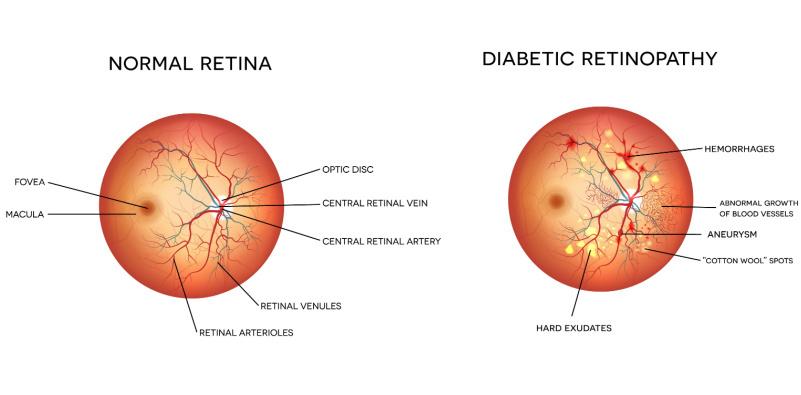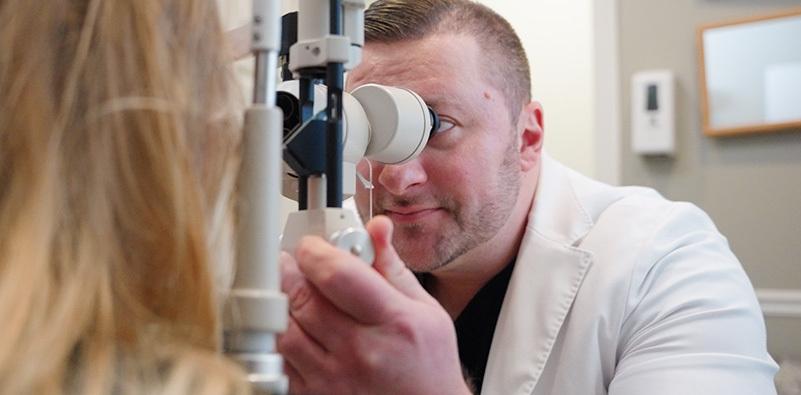We often get asked, ‘What is diabetic retinopathy?’.
Diabetic retinopathy is one of the leading causes of blindness in the US, and for people with diabetes, it is the most common eye disease. The National Diabetes Statistics Report shows that around 38.4 million Americans suffer from diabetes, which is over 11% of the population. Of those, 1 in 5 people aren’t even aware that they have diabetes. That’s millions of people whose eyesight is at risk.
What Is Diabetic Retinopathy?

Diabetic retinopathy is a condition that happens when high blood sugar levels cause damage to the blood vessels in the retina at the back of the eye. There are 2 stages of the disease. The early stage is known as non-proliferative retinopathy. Blood vessels swell and leak, which in some cases can cause swelling of the retina and mild vision loss. At this stage, it is treatable.
Proliferative retinopathy is the advanced stage when abnormal new blood vessels grow on the retina. These can then break and bleed into the vitreous, the gel-like substance that fills the eye, causing severe vision loss and requiring urgent treatment.
Who Is At Risk?
Diabetic retinopathy causes are mainly due to poorly managed diabetes. If you are a smoker, have high blood pressure or are pregnant, the risk increases. You can lower your risk of developing the condition by controlling your blood sugar levels, ensuring you take any medication on time, and leading a healthy lifestyle.
Diabetic Retinopathy Symptoms

Like many eye diseases, diabetic retinopathy often shows no obvious symptoms in the early stages. As the condition progresses, symptoms may start to show, such as:
- blurred or double vision
- seeing an increased number of floaters
- dark or blank spots in your vision
- colors appearing faded
- poor night vision
- pain or pressure in one or both eyes
Both eyes can be affected by symptoms at the same time.
Detection And Diagnosis

Because symptoms don’t appear in the early stages of diabetic retinopathy, regular annual eye examinations are essential for people with diabetes or have been told they are at risk of developing it. You will have several tests as part of an eye exam that can detect signs of diabetic retinopathy, but the best chance for early detection is an OCT scan.
This advanced 3D scan of the retina shows all its layers in minute detail and can detect eye conditions up to 5 years before a regular eye exam might do.
Diagnosing eye disease in the earliest stages gives you the best chance of successful treatment. Undiagnosed or untreated diabetic retinopathy will likely lead to vision loss, so those annual eye exams can save your vision.
Diabetic retinopathy treatment will depend on how advanced the disease is and could include injections, laser surgery or vitrectomy.
Book your eye examination today If you are diabetic and haven’t had an eye exam recently, we encourage you to contact us and book a comprehensive eye exam with an OCT scan today. Peace of mind is worth it over the risk of losing your precious vision!
